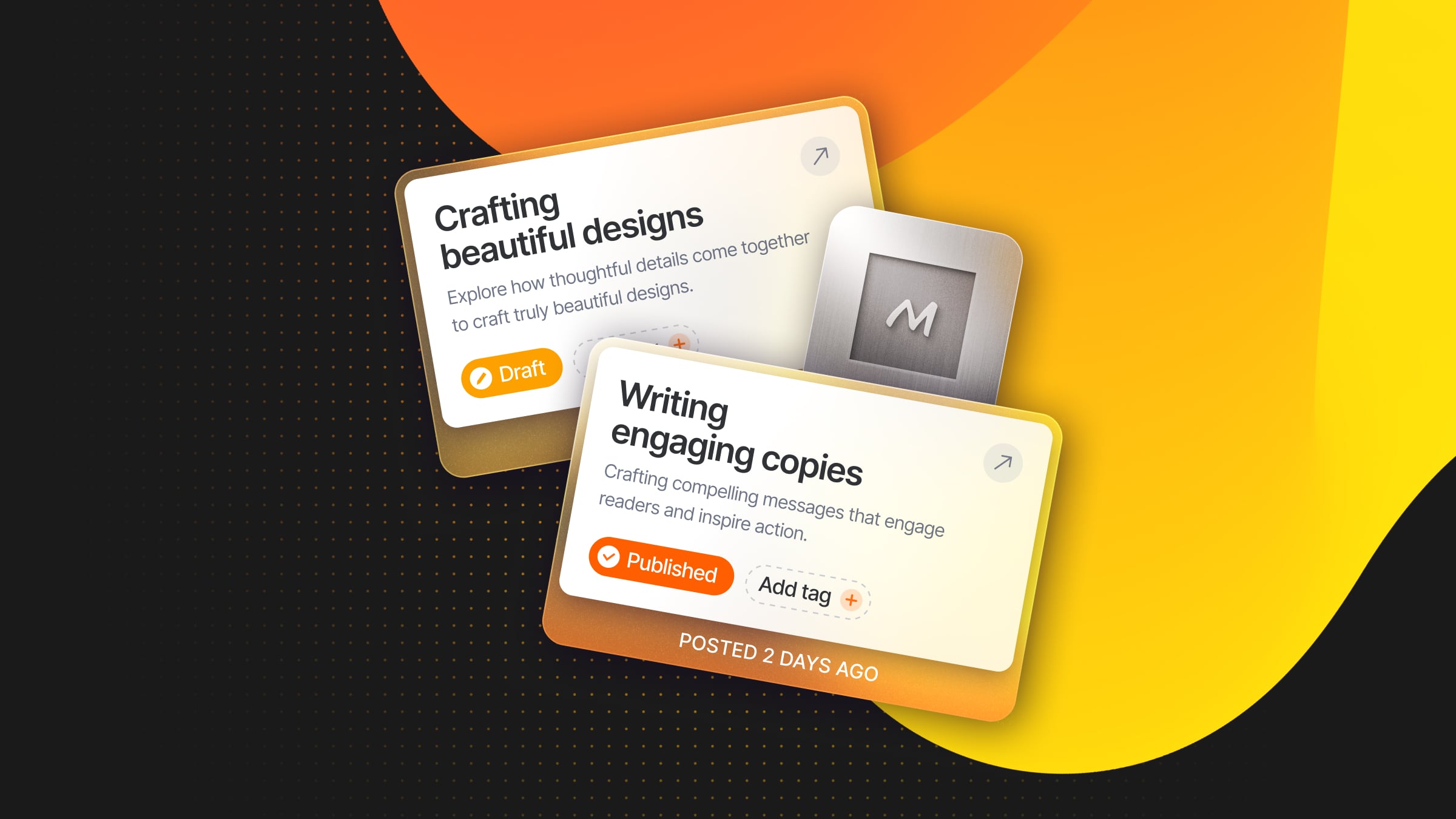Building Production API Services with Encore, TypeScript, and Neon Serverless Postgres
Deploy Backends Faster with Encore and Neon
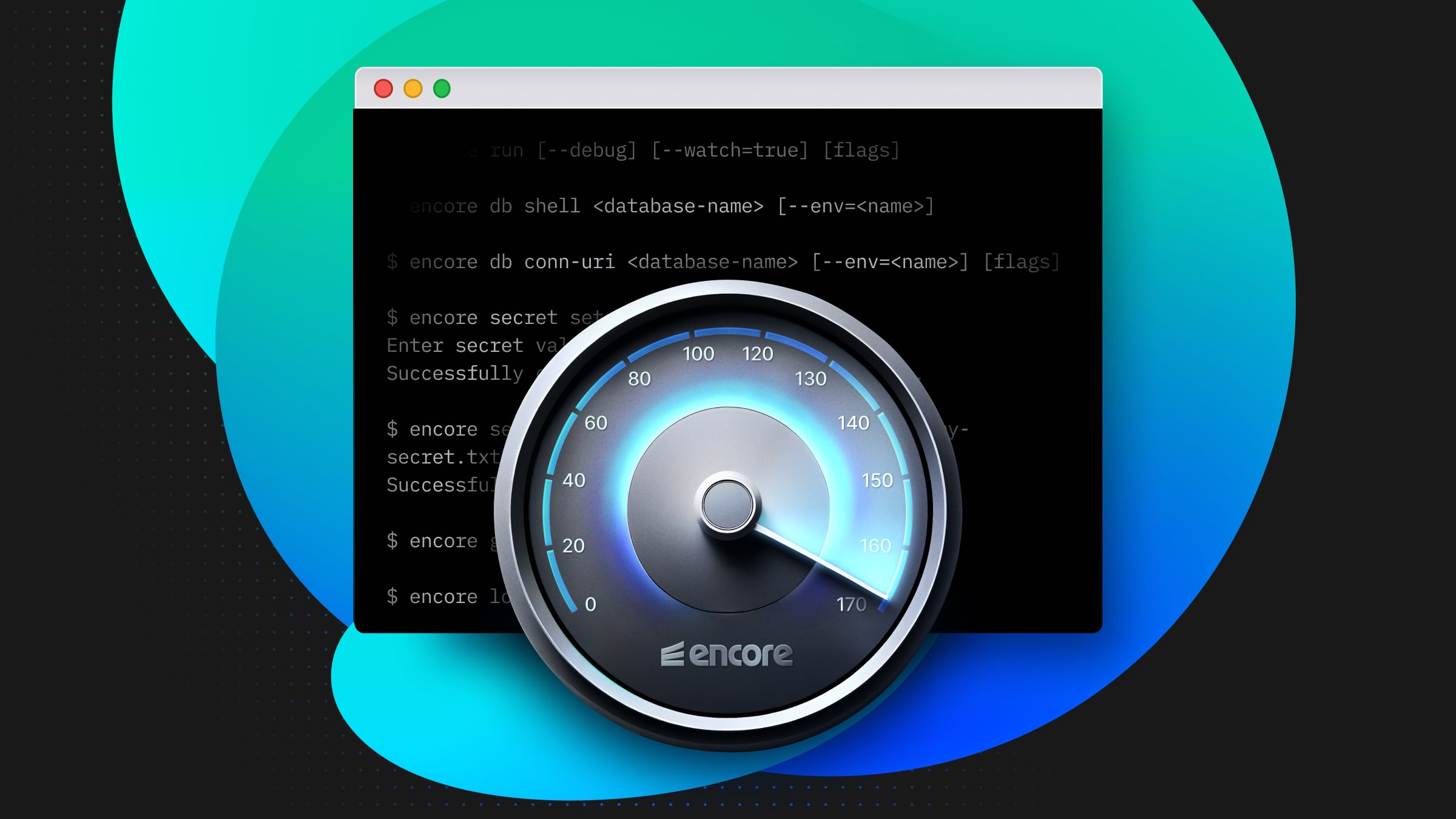
Starting today, Encore now supports using Neon Postgres for all Encore environments, including those in the cloud on Amazon Web Services (AWS) and Google Cloud Platform (GCP).
“This means you can connect your Neon account to use highly scalable serverless Postgres for all your Encore managed environments, in the same seamless way youʼre already using Encore to orchestrate your Cloud SQL and RDS databases.” –Encore x Neon announcement post
Encore offers a streamlined development platform for building cloud backend applications, enabling developers to focus on building cloud-first solutions rather than struggling with vendor-specific infrastructure complexities. Pairing Encore with Neon Serverless Postgres enhances this developer experience, providing a flexible and robust foundation for building scalable API services.
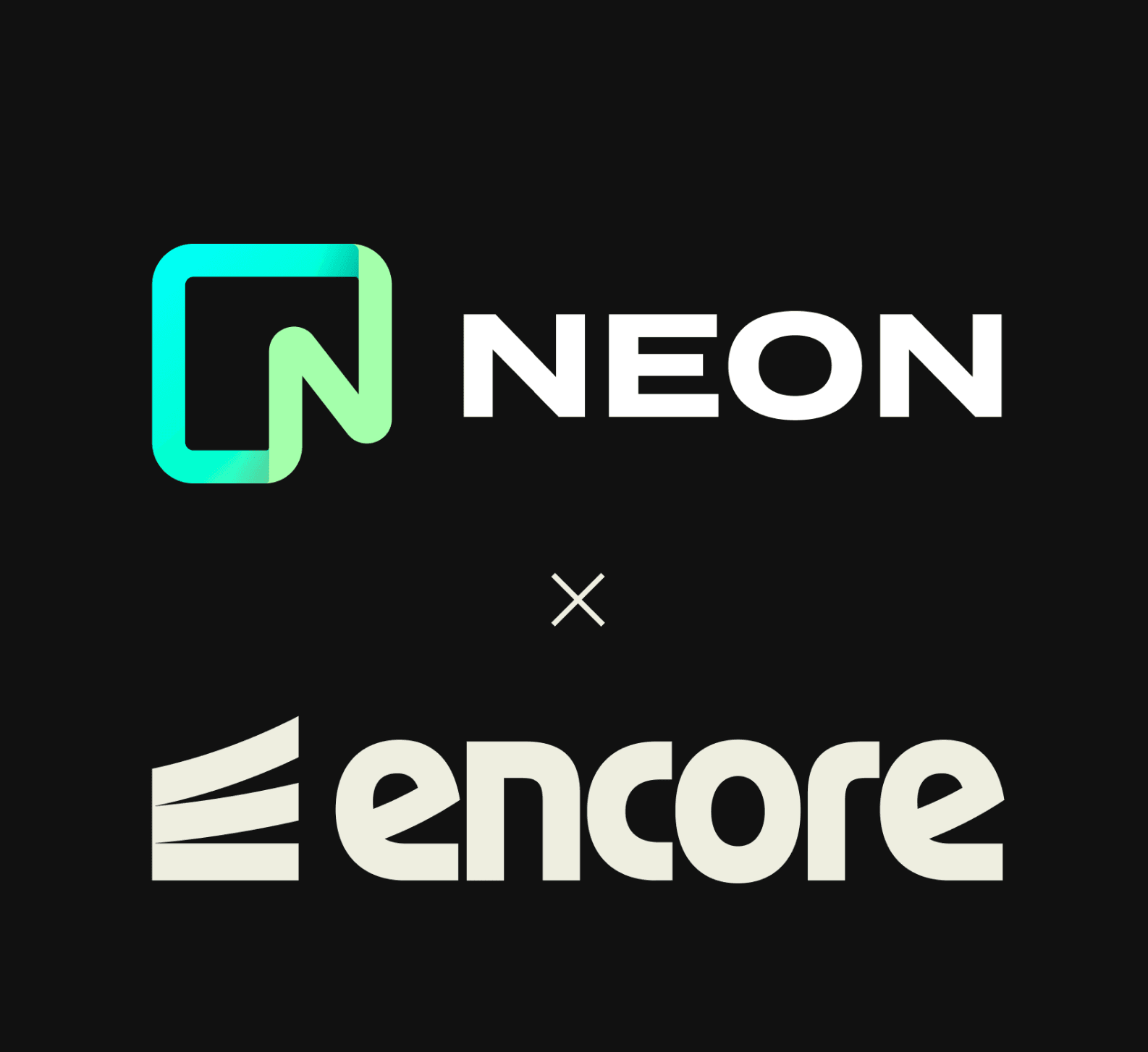
Now, with Encore, you can leverage Neon Postgres through your entire development lifecycle. From local development to production. This includes services and APIs, Databases (as with Neon), Cron Jobs, Pub/Sub & Queues, and Secrets.
In this post, we’ll walk through setting up a URL Shortener Web Service using an Encore template and CLI. Then, after deploying the local environment to a staging environment, we’ll push to a production environment.
This web service will use the Encore TypeScript SDK, now Generally Available, to build out the backend cloud infrastructure.
Prerequisites
To follow along, you’ll need:
- A Neon account
- The Encore CLI installed and configured
- Docker desktop running to test locally to test the app
If you’d like to deploy the final application to AWS or GCP, then you’ll need to configure those accounts separately and link within the Encore console. The application in this post will be deployed to the Encore Cloud.
Encore’s Development Flow
Encore’s TypeScript SDK speeds up backend development by allowing frontend and full-stack developers to build production-ready applications and distributed systems using a language that is already familiar. Leveraging TypeScript, developers can transition from frontend to backend development, ensuring type safety throughout the process. The TypeScript SDK simplifies backend development by allowing developers to declare common infrastructure primitives directly in application code, streamlining workflows and facilitating rapid iteration and debugging.
Additionally, If you use Neon for your production or testing database, you can now configure Encoreʼs built-in ephemeral Preview Environments to automatically branch off this database, seeding your Preview Environment with real-world data to simplify testing.
Here’s how Encore facilitates a seamless development workflow:
Local Development
- Encore’s local development workflow reduces the hassle of setting up infrastructure manually. With just a few commands, developers can instantiate a local environment that mirrors the cloud setup.
- The local environment accurately mirrors the cloud environment, helping to maintain consistency and minimizing discrepancies during development.
- Encore’s built-in tools, such as type-aware infrastructure and automatic API documentation generation, enhance developer productivity.
Testing
- Encore simplifies testing by providing built-in support for service/API mocking and dedicated test infrastructure.
- Developers can leverage preview environments for each Pull Request, facilitating comprehensive end-to-end testing before deployment.
DevOps
- Encore provides automatic infrastructure provisioning in the cloud, eliminating the need for manual configuration.
- By leveraging the Backend SDK, developers can declare infrastructure semantics within their application code, enabling seamless infrastructure management across environments.
- Encore offers a suite of DevOps tools, including least-privilege IAM setup, infrastructure tracking, and cost analytics, empowering teams to focus on product development rather than infrastructure management.
If you aren’t using AWS or GCP directly, you can deploy your apps directly to Encore’s cloud infrastructure.
Using Neon Serverless Postgres with Encore
Neon Serverless Postgres complements Encore by offering a serverless Postgres service optimized for cloud environments. Here’s how Neon Serverless Postgres enhances the development experience:
- Neon abstracts away the complexities of managing Postgres databases, allowing developers to focus on application logic.
- With Neon’s serverless architecture, databases automatically scale to accommodate fluctuating workloads, providing optimal performance without manual intervention.
- Neon enables database branching, making it fast and cost effective to create a separate database instance for each environment, such as development, staging, and production.
Create and Deploy the URL shortener app
Let’s dive into the quick start guide to build your first app in just a few minutes using the Encore CLI, TypeScript SDK, and Neon.
First, Install the Encore CLI. The Encore CLI provisions your local development environment and simplifies application setup:
brew install encoredev/tap/encoreAfter the CLI is installed, use encore app create flow to create an app locally.
encore app create
Select language for your application [Use arrows to move]
Go
Build performant and scalable backends with Go
│ TypeScript
│ Build backend and full-stack applications with TypeScript and Node.JSSelect TypeScript and the URL Shortener template.
✔ Language: TypeScript
Template [Use arrows to move]
Hello World
A simple REST API
Uptime Monitor
Microservices, SQL Databases, Pub/Sub, Cron Jobs
│ URL Shortener
│ REST API, SQL Database
Empty app
Start from scratch (experienced users only)Follow the prompts to pick a name for your app and select the URL Shortener template. If you’re only doing local development or managing your own deployments, no Encore account is needed. For this guide, we’ll be using Encore’s cloud platform to automate cloud deployments, so if it’s your first time using Encore you’ll need to sign up for a free account.
✔ Language: TypeScript
✔ Template: URL Shortener
App Name [Use only lowercase letters, digits, and dashes]
> neon-short-urlAnd just like that, your app is set up locally. You’ll also have an app project created in the Encore web dashboard.
Successfully created app neon-short-url!
App ID: neon-short-url-a7f2
Web URL: https://app.encore.dev/neon-short-url-a7f2
Useful commands:
encore run
Run your app locally
encore test
Run tests
git push encore
Deploys your app
Get started now: cd neon-short-url && encore runOpen the generated TypeScript file (url.ts) in your code editor to explore the template. You’ll notice that defining API endpoints is straightforward and follows standard TypeScript conventions.
View the App in the Encore Dashboard locally with:
encore runIn this example, Encore is using Docker to recreate the environment and pull in the Postgres Docker image for testing. You’ll also notice that the database migrations are run as part of this command execution. This migration is located in the project directory at url/migrations/url/1_create_tables.up/sql.
neon-short-url encore run (main)
✔ Building Encore application graph... Done!
✔ Analyzing service topology... Done!
✔ Creating Postgres database cluster... Done!
✔ Pulling Postgres docker image... Done!
✔ Running database migrations... Done!
✔ Starting Encore application... Done!
Encore development server running!
Your API is running at: http://127.0.0.1:4000
Development Dashboard URL: http://localhost:9400/neon-short-url-a7f2The app is now running locally and can be inspected using the Development Dashboard URL.

Open the Local Development Dashboard at http://localhost:9400 to view the API explorer and service catalog.
Now, we’ll push the new app and deploy. Push your changes to deploy your application to Encore’s free development Cloud:
git add -A .
git commit -m 'Init deploy 🚀'
git push encoreWhen prompted, connect to Encore’s Git, git.encore.dev. This will trigger a deployment through the Encore cloud. You can also integrate your app with GitHub, connect to a specific app repo, and activate preview environments for each pull request (PR). Additionally, preview environments allow you to take advantage of Neon’s branching automatically through Encore for a DB per PR.
View the app in the Encore dashboard
In Encore, each app has environments. When you first push the app from the local environment, a live (deployed) staging environment is created. This app will, by default, have a Neon database provisioned and managed for you by Encore. You can see this by viewing the infrastructure for the staging environment for the app.
For example, when the URL shortener app is deployed initially, you’ll see the provisioned Postgres database.
The infrastructure and Neon Database is managed by Encore. This is why it is not showing in your account (if you’ve already configured your Neon API key).
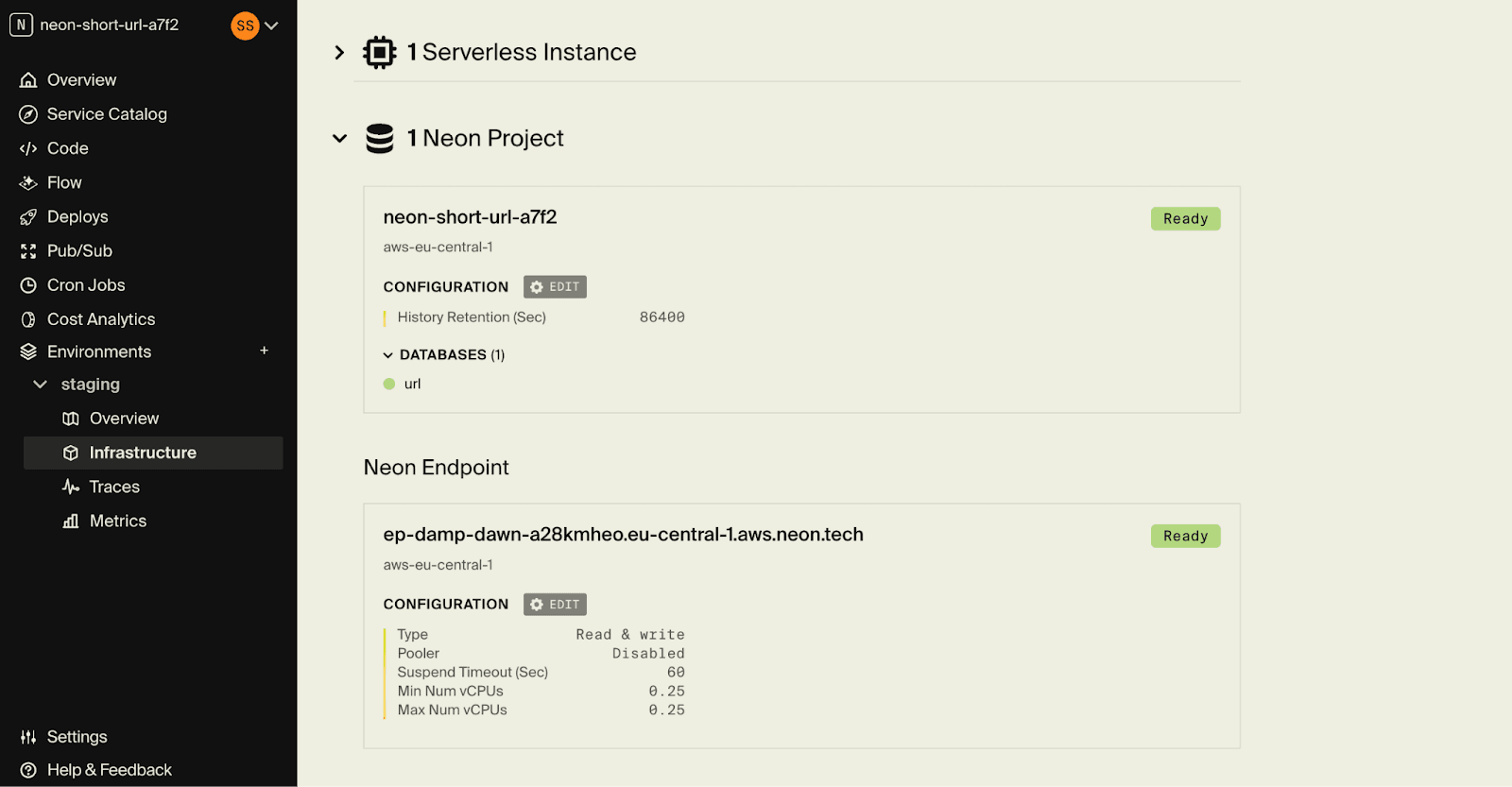
Deploy a Prod Environment with Neon
Next, you’ll create a new production environment and integrate your Neon account for database use.
Configure Neon in your Encore Account
Visit the Neon Console, sign up, and create your first project by following the prompts in the UI. You can use an existing project or create another if you’ve already used Neon.

Add the Neon API Key
Next, create a Neon API key for your Neon account. Add this API key to the Neon section of the URL Shortener App Settings at https://app.encore.dev/<app-id>/settings/integrations/neon and Save.
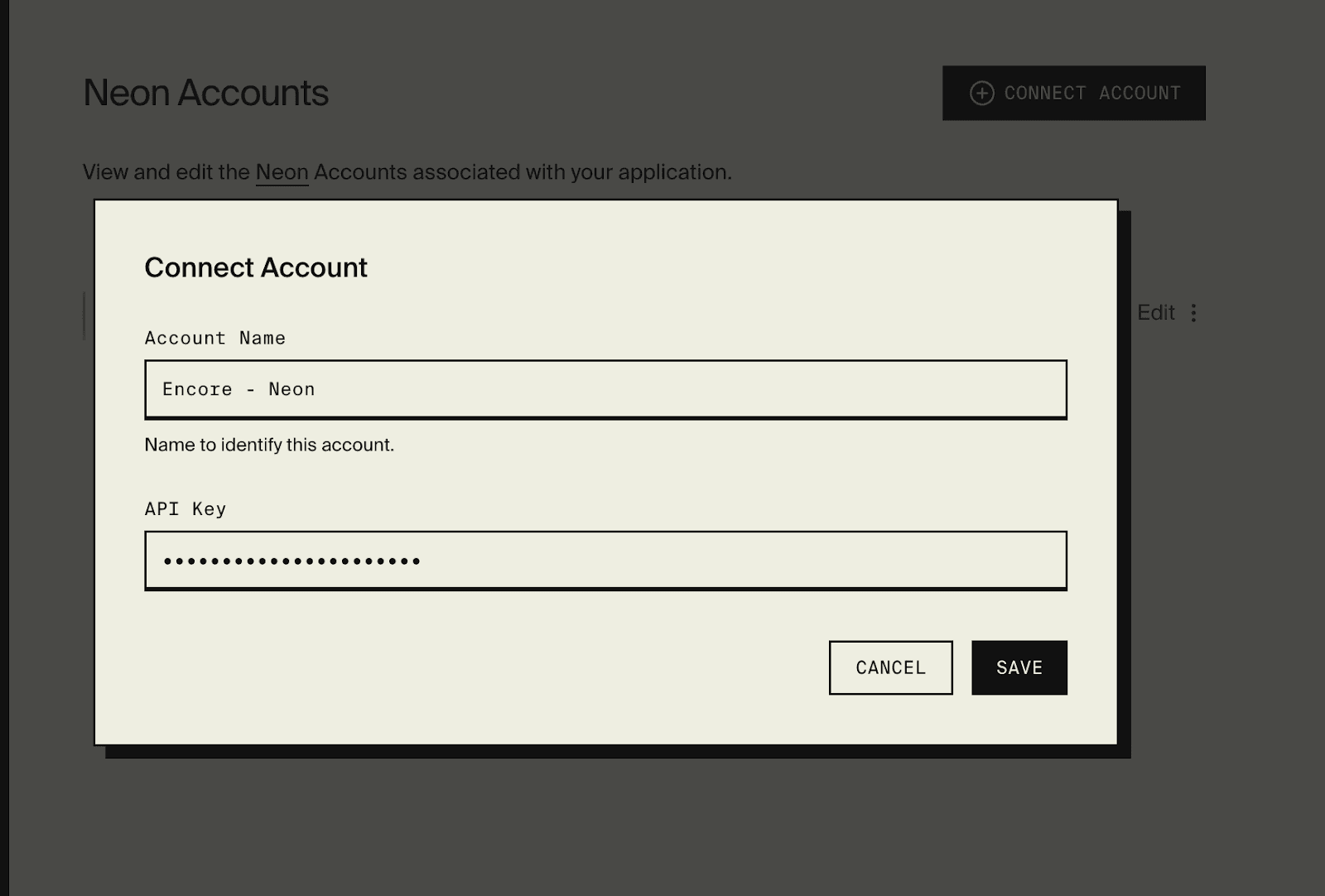
This allows Encore to provision and configure Neon projects in your Neon account using the Neon API. So, instead of the production database being hosted in the Encore account; the production Neon database will be in your personal Neon account.
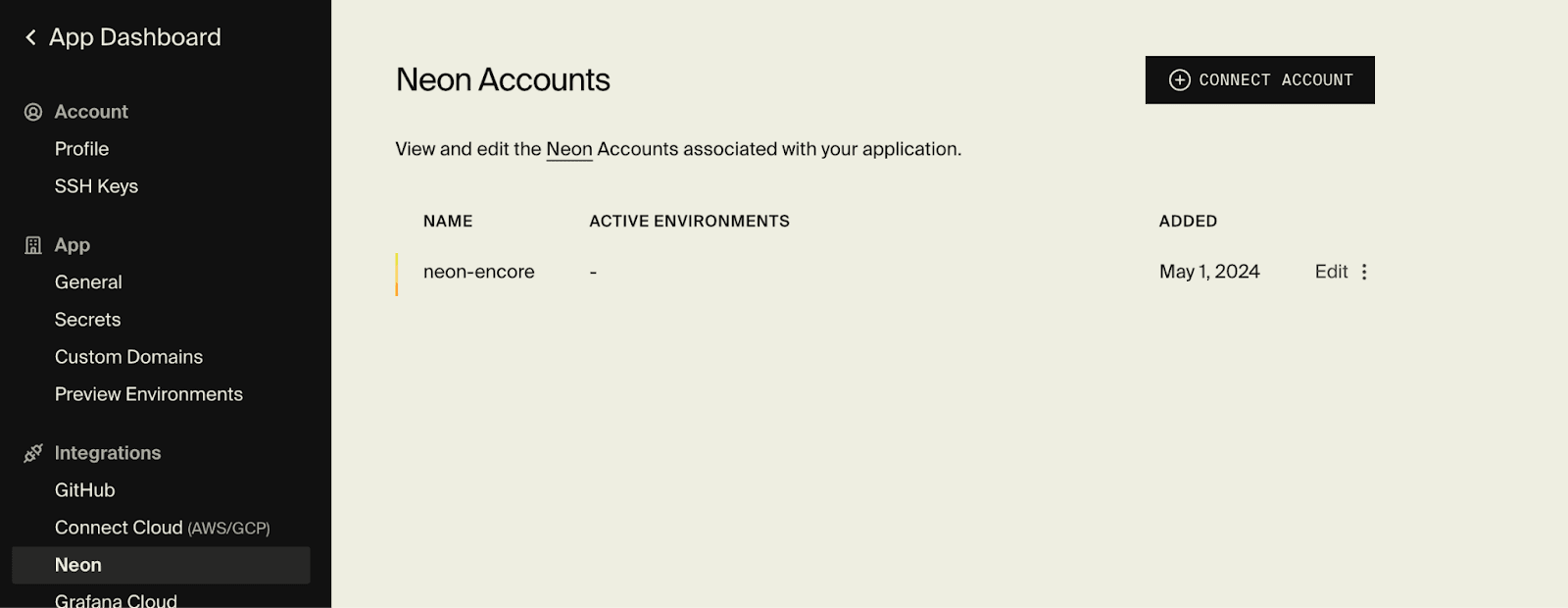
Next, you’ll create the prod environment.
Create a Production Encore environment
Create a new environment, prod, in the application and Save.
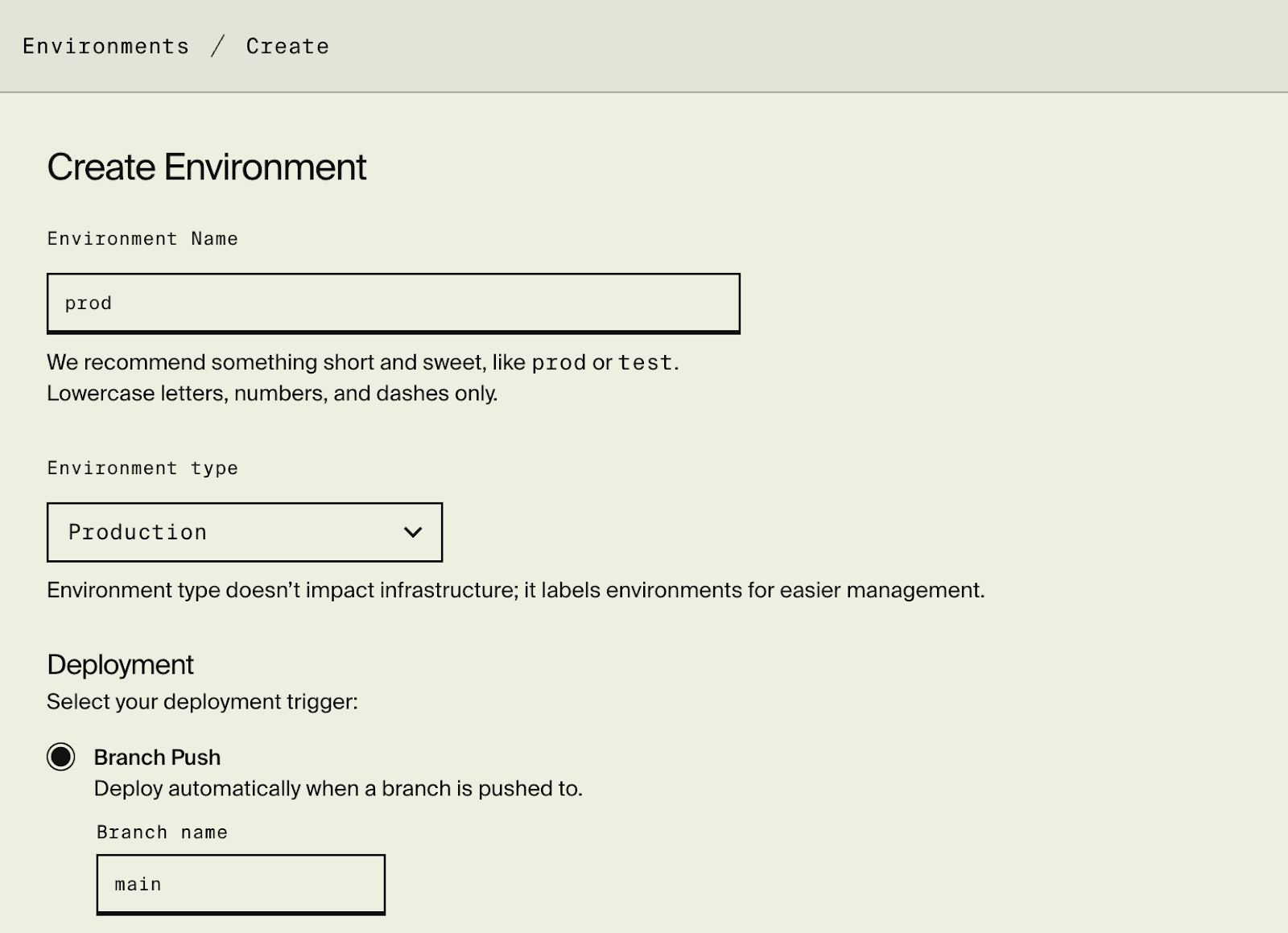
For the application database, select Neon. Adjust the settings depending on your preferred region and Encore > Neon integration name (from the Neon API key settings).
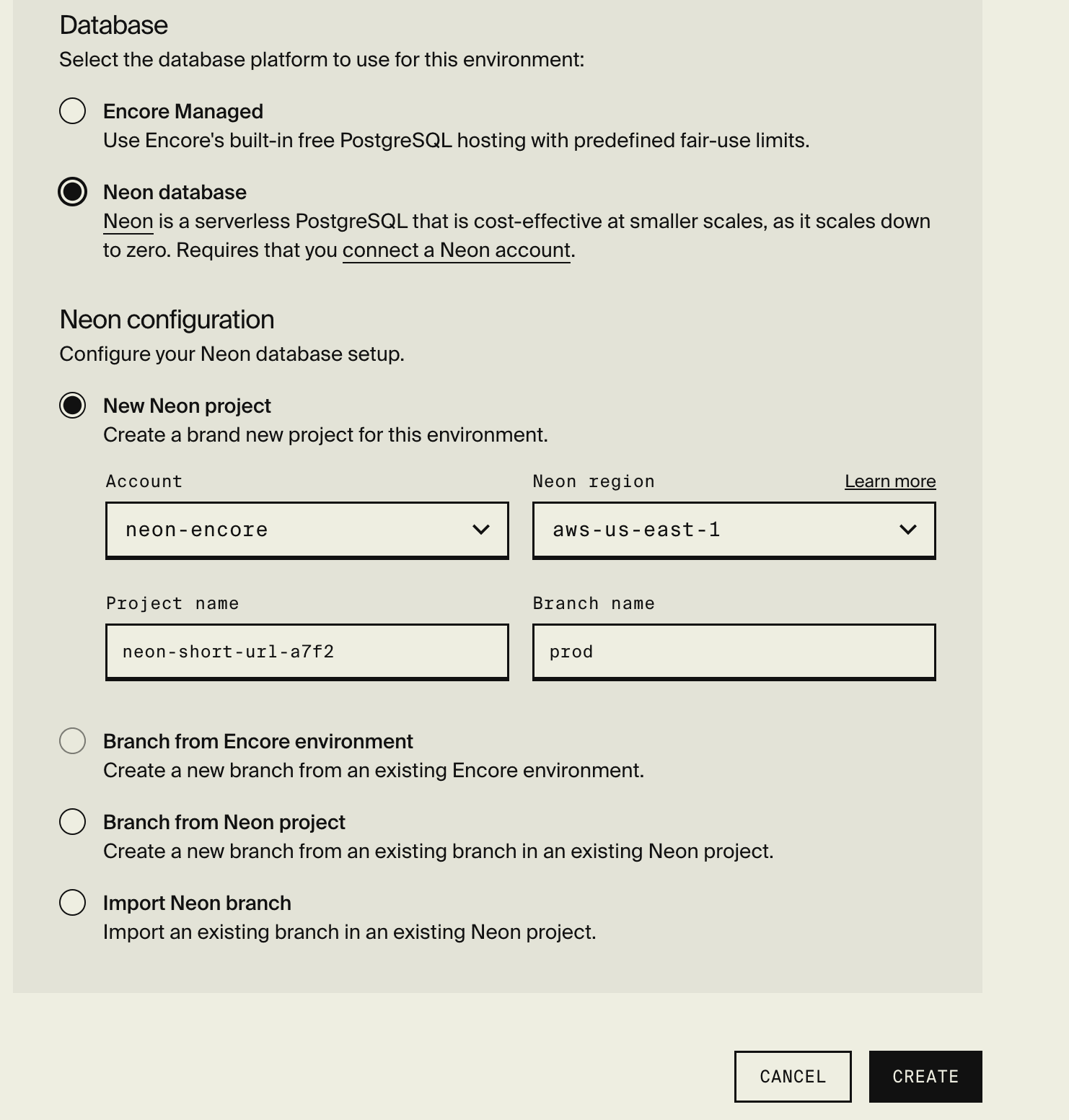
Create the environment.
View the deployed app resources and Postgres database
Once the deployment is complete (which only takes a few seconds), you can test the app and view the database resources.
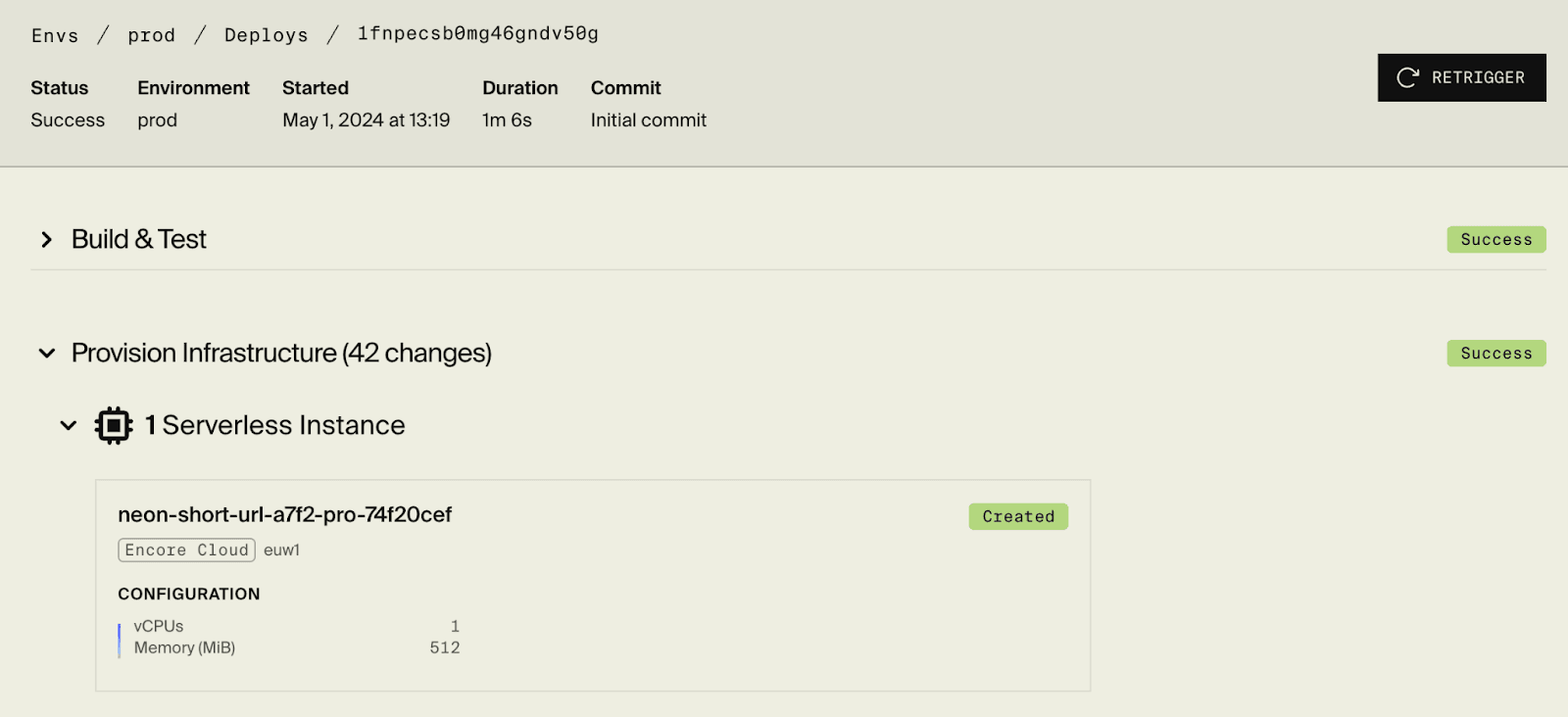
Not only is the app deployed and operational, but the Neon Postgres database has been created in your account, and the migrations have been applied. Using Neon Postgres Branching, Encore created a prod Postgres branch from the parent branch for the environment.

Inspecting the database tables, we can see that the migrations were applied.

Testing the URL shortener with cURL
Now, you can test the API service by using the Encore Cloud Dashboard with cURL.
curl 'https://<app-url>.encr.app/url' -d '{"url":"<url-to-create-id-for>"}'After a successful request, you’ll see the data written into the integrated database in your Neon account.
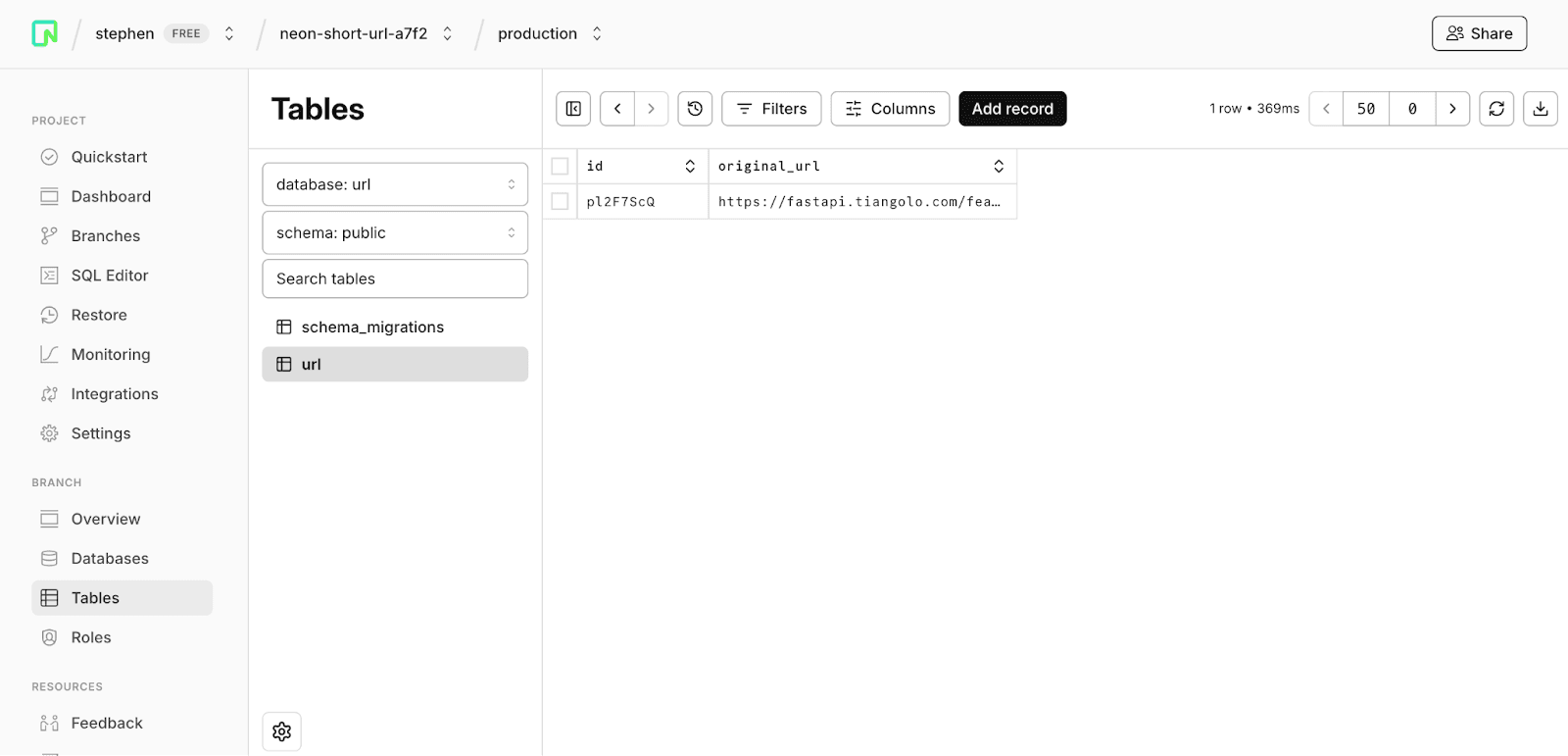
Clean up
To clean up your application infrastructure. Navigate through each environment and remove the environment from the environments > environment-name > settings section.
Conclusion
Using Neon with Encore offers a robust foundation for developing scalable API services across multiple environments and cloud platforms. Encore streamlines application development and deployment, while Neon manages your serverless Postgres database, enabling you to focus on innovation and speed.
Starting today, Encore supports using Neon Postgres for all Encore environments, including those in the cloud on AWS and GCP. This capability is now available for developers to take advantage of, enabling seamless database management across different environments and cloud providers.
To accelerate your development process and leverage the power of Neon Serverless Postgres, sign up and try Neon for free. Stay updated by following us on Twitter/X, and join our Discord community to share your experiences and explore how we can support you in building the next generation of applications.
